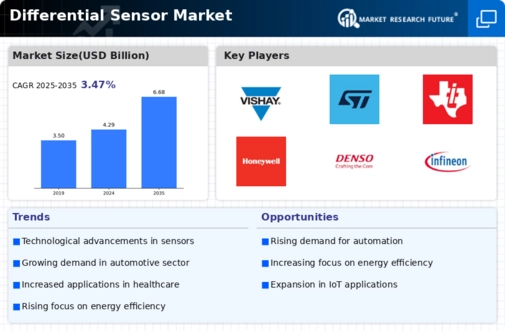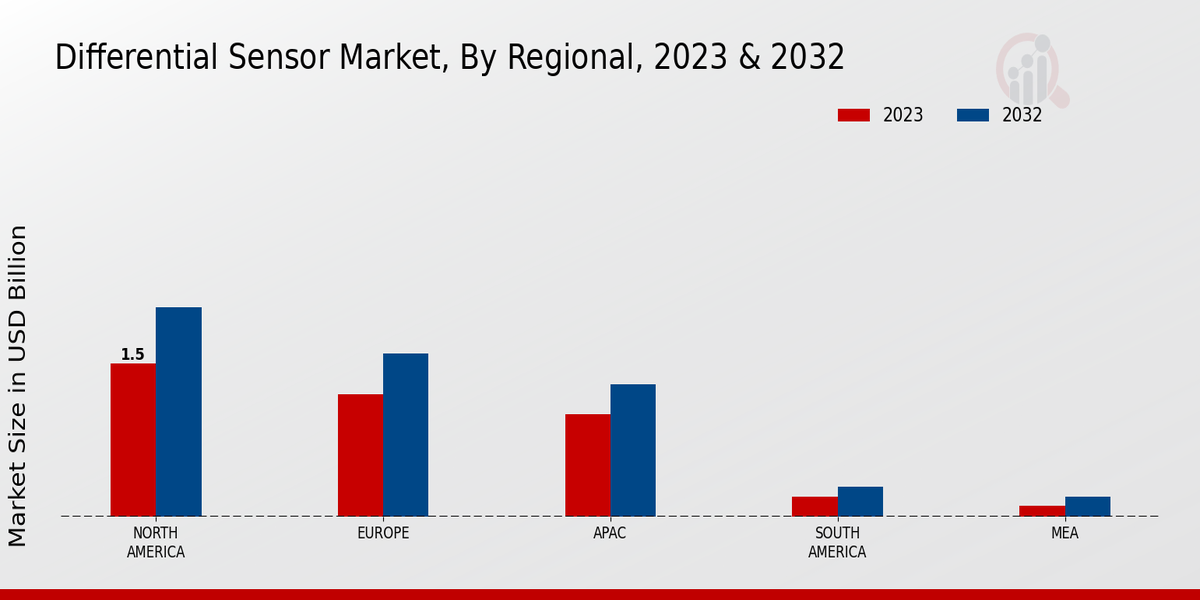Market Growth Projections
The Global Differential Sensor Market Industry is projected to experience substantial growth over the next decade. With a market value anticipated to reach 4.29 USD Billion in 2024, the industry is on a promising trajectory. The expected CAGR of 4.11% from 2025 to 2035 suggests a robust expansion, driven by factors such as technological advancements, increasing automation, and rising environmental concerns. As various sectors continue to adopt differential sensors for enhanced efficiency and safety, the market is likely to evolve significantly, indicating a dynamic future for the industry.
Rising Environmental Concerns
The Global Differential Sensor Market Industry is also influenced by the rising environmental concerns and the need for sustainable practices. Differential sensors are instrumental in monitoring air and water quality, thereby aiding in environmental protection efforts. Governments and organizations are increasingly investing in technologies that facilitate environmental monitoring, which in turn drives the demand for differential sensors. For example, regulatory bodies are implementing stricter emissions standards, necessitating the use of advanced sensors to ensure compliance. This trend is expected to bolster the market, contributing to its anticipated growth to 6.68 USD Billion by 2035.
Growth in the Automotive Sector
The automotive sector is a significant driver of the Global Differential Sensor Market Industry, as the demand for advanced safety features and fuel efficiency continues to rise. Differential sensors are crucial for applications such as tire pressure monitoring systems and electronic stability control, which enhance vehicle safety and performance. With the automotive industry increasingly focusing on electric vehicles and hybrid technologies, the need for precise sensor systems becomes even more pronounced. This sector's growth is expected to contribute to the overall market expansion, aligning with the projected market value of 4.29 USD Billion in 2024.
Increasing Demand for Automation
The Global Differential Sensor Market Industry is experiencing a notable surge in demand driven by the increasing automation across various sectors. Industries such as automotive, aerospace, and manufacturing are integrating advanced sensor technologies to enhance operational efficiency and safety. For instance, the automotive sector is adopting differential sensors for precise monitoring of vehicle dynamics, which is crucial for developing autonomous driving systems. This trend is expected to contribute significantly to the market, with projections indicating a market value of 4.29 USD Billion in 2024, reflecting the growing reliance on automation in industrial processes.
Expanding Applications in Healthcare
The Global Differential Sensor Market Industry is witnessing an expansion in applications within the healthcare sector. Differential sensors are being utilized in various medical devices for monitoring vital signs and ensuring patient safety. Their ability to provide accurate and real-time data is crucial in critical care settings. As healthcare technology continues to evolve, the demand for sophisticated sensor systems is likely to increase. This trend may lead to a significant market growth trajectory, with the industry projected to reach 6.68 USD Billion by 2035, reflecting the growing integration of sensor technology in healthcare.
Technological Advancements in Sensor Technology
Technological innovations play a pivotal role in shaping the Global Differential Sensor Market Industry. Recent advancements in micro-electromechanical systems (MEMS) and digital signal processing have led to the development of highly sensitive and accurate differential sensors. These sensors are increasingly utilized in applications ranging from environmental monitoring to industrial automation. The integration of IoT capabilities further enhances their functionality, allowing for real-time data collection and analysis. As a result, the market is poised for growth, with a projected compound annual growth rate (CAGR) of 4.11% from 2025 to 2035, indicating a robust future for sensor technology.






















Leave a Comment